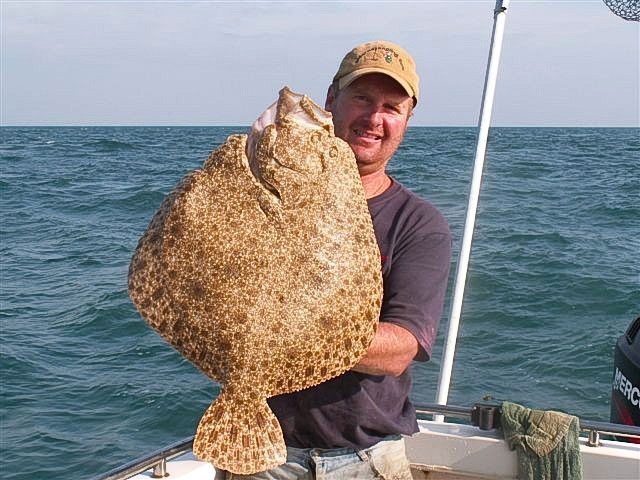Scophthalmus maximus

Distinguishing features
The turbot is a wide bodied flatfish with the eyes on the left side of its head. The body is without scales but there are boney tubercles on it although these are sometimes only on the underside. Only the tips of the dorsal fin are outwith the membrane. Colouration varies according to the habitat but it’s generally a sandy brown with darker spots which extend onto the tail fin. The dorsal fin has 57-71 rays and the anal one 43-52.
Size
Turbot are the largest of the flat fish other than halibut and can reach lengths of one metre and a weight of 25 kg.
British Record Fish List
UK Shore Record: 33lb 12oz 0dms / 15.308kg
UK Boat Record: 28lb 8oz 0dms / 12.926kg
European Line Class Record for this species
Habitat
The turbot can be found in the eastern North Atlantic, North Sea, and Baltic Sea and down to the Mediterranean. It inhabits water from the shoreline to depths of around 55 metres where the seabed is composed of sand, gravel, crushed shells or a mixture of these. Larger specimens are found on offshore banks. They are also found in the scour adjacent to wrecks.
Food
Turbot feed almost exclusively on fish, particularly sandeels, herring, whiting and sprats.
Bait
Long thin fillets of mackerel or launce are a favourite bait as are live or dead large sandeels.

Turbot on the left and brill on the right
